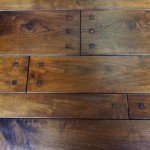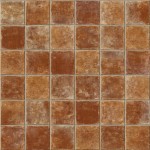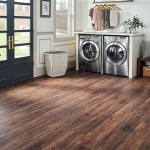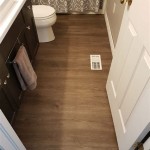Vinyl plank flooring is an increasingly popular choice for homeowners looking to add a touch of style and sophistication to their home décor. But like all other types of flooring, vinyl plank flooring is subject to changes in temperature. Understanding the temperature range of vinyl plank flooring is important for homeowners who want to ensure that their flooring remains in top condition for years to come.
What is Vinyl Plank Flooring?
Vinyl plank flooring is a type of flooring that is made up of individual planks of vinyl material. These planks are designed to look like real wood and can be used to achieve a striking, natural-looking floor. Vinyl plank flooring is often chosen for its resilience and ease of maintenance, making it perfect for busy households.
How Does Temperature Affect Vinyl Plank Flooring?
Vinyl plank flooring is susceptible to changes in temperature. When exposed to extreme temperatures, it can warp, expand, or contract. This can lead to gaps between planks, uneven edges, and other issues. To avoid these problems, it is important to understand the temperature range in which vinyl plank flooring can safely operate.
What is the Recommended Temperature Range for Vinyl Plank Flooring?
The recommended temperature range for vinyl plank flooring is between 65°F and 85°F. This range ensures that the planks don’t expand or contract too much, which can lead to warping or other damage. It is also important to avoid extreme temperature fluctuations, as this can cause the planks to become misaligned.
How Can I Maintain the Recommended Temperature Range?
Maintaining the recommended temperature range for vinyl plank flooring is relatively easy. The simplest way to do this is to install a thermostat in the room where the flooring is located. This will allow you to set a comfortable temperature and maintain it throughout the seasons. Additionally, it is important to ensure that the room is well-ventilated, as this will help keep the temperature consistent.
What Should I Do if My Vinyl Plank Flooring is Exposed to Extreme Temperatures?
If your vinyl plank flooring has been exposed to extreme temperatures, it is important to take action as soon as possible. The first step is to inspect the planks for any signs of damage, such as warping, gaps, or uneven edges. If any of these are present, it is important to replace the affected planks. Additionally, it is important to adjust the thermostat to ensure that the temperature stays within the recommended range.
Conclusion
Vinyl plank flooring is a great choice for homeowners looking to add a touch of style and sophistication to their home. However, it is important to understand the temperature range that is recommended for vinyl plank flooring in order to ensure that it remains in top condition for years to come. Additionally, if the flooring is exposed to extreme temperatures, it is important to inspect the planks for any signs of damage and take steps to adjust the thermostat to maintain the recommended temperature range.















Related Posts








